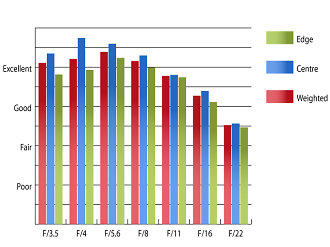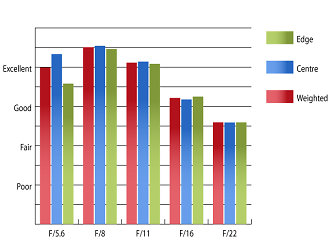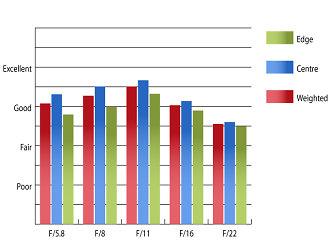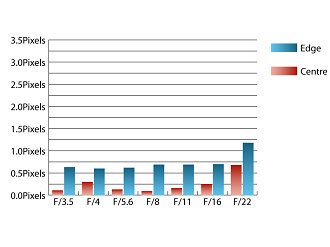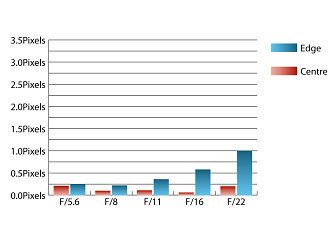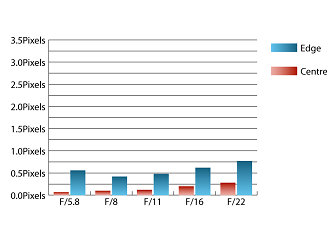Tamron 14-150mm f/3.5-5.8 Di III Lens Review
Tamron 14-150mm f/3.5-5.8 Di III Performance
At 14mm and maximum aperture, levels of sharpness are already excellent in the centre of the frame, and clarity toward the edges of the frame is very good. Stopping down improves performance across the frame, with peak sharpness being achieved at f/5.6. Here clarity is outstanding in the centre, and excellent towards the edges of the frame.
At 50mm, similar high levels of sharpness are maintained. At maximum aperture sharpness is excellent in the centre and very good towards the edges of the frame. Stopping down to f/8 results in excellent clarity across the frame at this focal length.
Finally at 150mm, overall performance is reduced, but the lens still produces decent sharpness levels, especially for a lens of this type. At f/5.8, sharpness approaches very good levels in the centre of the frame, and is fairly good towards the edges. The performance towards the edges of the frame improves slightly with stopping down, reaching very good levels in the centre and good levels towards the edges of the frame at f/11.
How to read our charts
The blue column represents readings from the centre of the picture frame at the various apertures and the green is from the edges. Averaging them out gives the red weighted column.The scale on the left side is an indication of actual image resolution. The taller the column, the better the lens performance. Simple.
For this review, the lens was tested on a Panasonic Lumix GX7 using Imatest.
Levels of chromatic aberrations are well controlled for a lens of this type. Fringing only exceeds one pixel width on one occasion, and that is at 14mm and f/22. The overall low levels of CA should pose few issues during normal shooting.
How to read our charts
Chromatic aberration is the lens' inability to focus on the sensor or film all colours of visible light at the same point. Severe chromatic aberration gives a noticeable fringing or a halo effect around sharp edges within the picture. It can be cured in software.Apochromatic lenses have special lens elements (aspheric, extra-low dispersion etc) to minimize the problem, hence they usually cost more.
For this review, the lens was tested on a Panasonic Lumix GX7 using Imatest.
Falloff of illumination towards the corners of the frame is well controlled for the most part. At 14mm the corners are 2.67 stops darker than the image centre at maximum aperture and at 150mm the corners are 1.7 stops darker. Visually uniform illumination is achieved with the lens stopped down to f/11 or beyond throughout the zoom range, although in some cases there is some darkness in the corners at all apertures at 14mm. This phenomenon does not appear in JPEGs taken with the camera, and is automatically corrected by some raw image converters, but not all.
As is often the case with super zoom lenses, distortion is strong at both ends of the range, although it isn't so strong that it will cause many issues for casual snaps, just when absolutely straight lines are required. At 14mm 6.1% barrel distortion is present, which is quite a high level and at 150mm 1.1% pincushion distortion is present, which is much less noticeable. The distortion pattern is uniform across the frame, so any distortion should be relatively easy to correct in image editing software afterwards if required.
A petal-shaped hood is supplied with the lens, which does a decent job of shielding the front element from extraneous light that may cause flare or loss on contrast. At 150mm, shooting into the light does result in a loss of contrast, but otherwise, this lens is reasonably resistant to flare.
Value For Money
This 14-150mm lens costs around £390, which is great value when compared to the direct alternatives available from the likes of Olympus and Panasonic.
The Olympus 14-150mm f/4-5.6 lens is similarly specified to this Tamron lens, apart from the maximum aperture being marginally faster at the telephoto end of the zoom range. However, this lens costs around £480.
Panasonic's 14-140mm f/3.5-5.6 lens is their closest equivalent, which costs around £490. This lens does include optical stabilisation, which may be a particular benefit to those who own a Micro Four Thirds camera that doesn't have sensor shift stabilisation, but it is 10mm shorter at the telephoto end.
Add your message
Please login here or if you've not registered, you can register here. Registering is safe, quick and free.
photodo Stats
428 MTF tests
74 in-depth photodo reviews
100+ users join each day
Help the lens community by reviewing or rating a lens today via our lens search
Latest Lens Reviews
- Chinon 28mm f/2.8 Vintage Lens Review
- Canon EF 70-200mm f/4L IS II USM Lens Review
- Samyang AF 85mm f/1.4 EF Review
- Sigma 70mm f/2.8 DG Macro Art Review
- Samyang AF 24mm f/2.8 FE Review
- Meike 50mm f/1.7 Review
- Tamron 70-210mm f/4 Di VC USD Review
- Lensbaby Burnside 35mm f/2.8 Review
- Asahi Super Takumar 50mm f/1.4 Review
- Asahi Super-Multi-Coated Takumar 135mm f/3.5 Review
